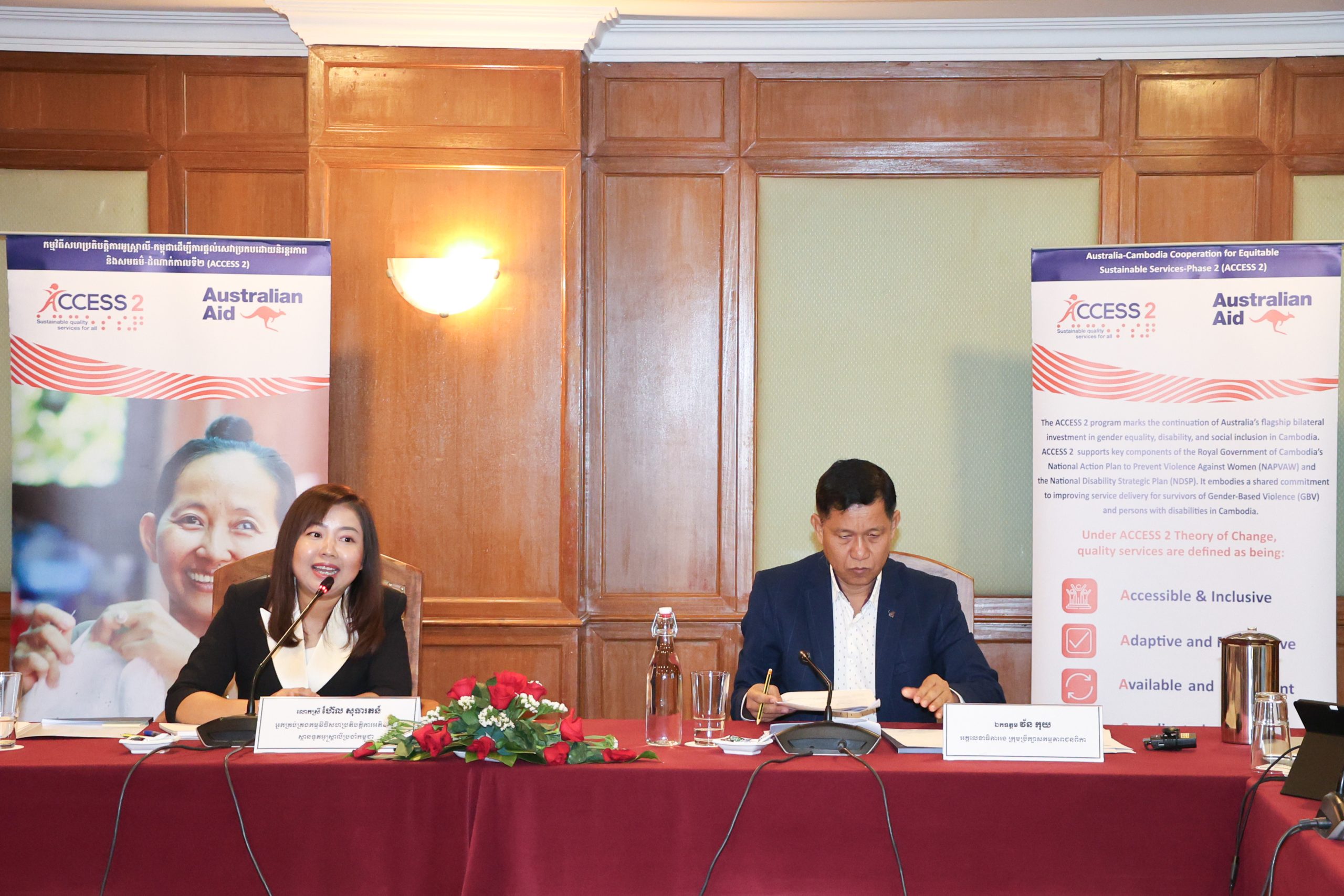The ACCESS 2 governance structure, part of Australia’s support framework, comprises a Steering Committee (ASC), three workstream working groups (Disability Inclusion, Rehabilitation, and Gender-Based Violence (GBV)), and Provincial Coordination Committees (PCCs). Each component plays a critical role in strengthening collaborative efforts between government and Strategic Implementing Partners (SIPs), supporting national and sub-national policy and planning processes, and improving the quality and coordination of services for persons with disabilities and survivors of GBV in ACCESS’s target provinces.
 The Second Disability Inclusion Workstream Meeting
The Second Disability Inclusion Workstream Meeting
The second Disability Inclusion (DI) Workstream meeting took place on 23 January 2025, co-chaired by the Disability Action Council Secretariat General (DAC-SG) and a representative from the Australian Embassy, Phnom Penh.
Bringing Stakeholders Together
ACCESS 2 is committed to fostering engagement and collaboration among national and sub-national stakeholders. This meeting brought together representatives from the following organisations and partners:
- Ministry of Social Affairs, Veterans and Youth Rehabilitation (MoSVY)
- Ministry of Health (MoH)
- Ministry of Women’s Affairs (MoWA)
- DAC-SG
- General Secretariat of the National Social Protection Council (GS-NSPC)
- SIPs: Cambodian Disabled People’s Organisation (CDPO), People’s Action for Inclusive Development (PAfID), CARE Cambodia, UNICEF, and WHO.
- Provincial Departments of Social Affairs, Veterans and Youth Rehabilitation/Disability Action Council (P-DAC)
- Organisations of Persons with Disabilities (OPDs)
- DFAT representatives
- ACCESS 2 team members
The meeting’s agenda focused on three key objectives:
- Presenting key progress from the first half of ACCESS 2 Year 2 (July–December 2024) and outlining priorities for the second half (January–June 2025).
- Sharing and discussing relevant topics, including:
- The Disability inclusion in Commune Investment Program (CIP)
- Implementation of the Disability Identification Program
- Disability inclusion in Social Protection initiatives
- Identifying shared priorities for the next six months.
Key Achievements and Lessons Learned
Representatives from the Department of Welfare for Persons with Disabilities (DWPD) and GS-NSPC presented updates on critical progress areas, such as advancing the implementation of the Disability Identification Program and enhancing disability inclusion in social protection initiatives.
SIP and OPD also shared lessons learned on strengthening the disability inclusion and the participation of OPD in CIP processes. The MoWA and SIP respectively provided updates on pending action points related to coordination and referral processes for women with disabilities who are survivors of GBV and progress on establishing the PCC in Ratanakiri Province.
Recognition and Commitment
Ms Sothearoth Hel, Portfolio Manager for Development Cooperation at the Australian Embassy and co-chair of the meeting, reaffirmed Australia’s commitment to addressing barriers faced by persons with disabilities, enhancing service provider capacity, and prioritising quality improvements in service delivery.
H.E. Vorn Koy, Deputy Secretary General of DAC and co-chair of the meeting, highlighted the alignment between the National Disability Strategic Plan 3 (NDSP 3), officially launched in December 2024, and ACCESS 2’s priorities. He expressed his gratitude to Australia for its support, stating:
“I sincerely hope that through our partnership within the framework of ACCESS 2, we will achieve the implementation of activities as outlined in our expected outcomes.”
Governance Mechanism Value-Add to ACCESS 2 Outcomes
The DI Workstream is helping drive the delivery of ACCESS 2’s end-of-program outcomes. By convening diverse stakeholders and fostering cross-sector collaboration, it ensures that disability inclusion is embedded across policy, planning, and service delivery processes. This integrated approach strengthens governance structures, improves coordination between national and sub-national actors, and accelerates progress toward inclusive, high-quality services for persons with disabilities.
The DI Workstream continues to play a pivotal role in advancing ACCESS 2’s commitment to creating inclusive and equitable opportunities for persons with disabilities in Cambodia.








